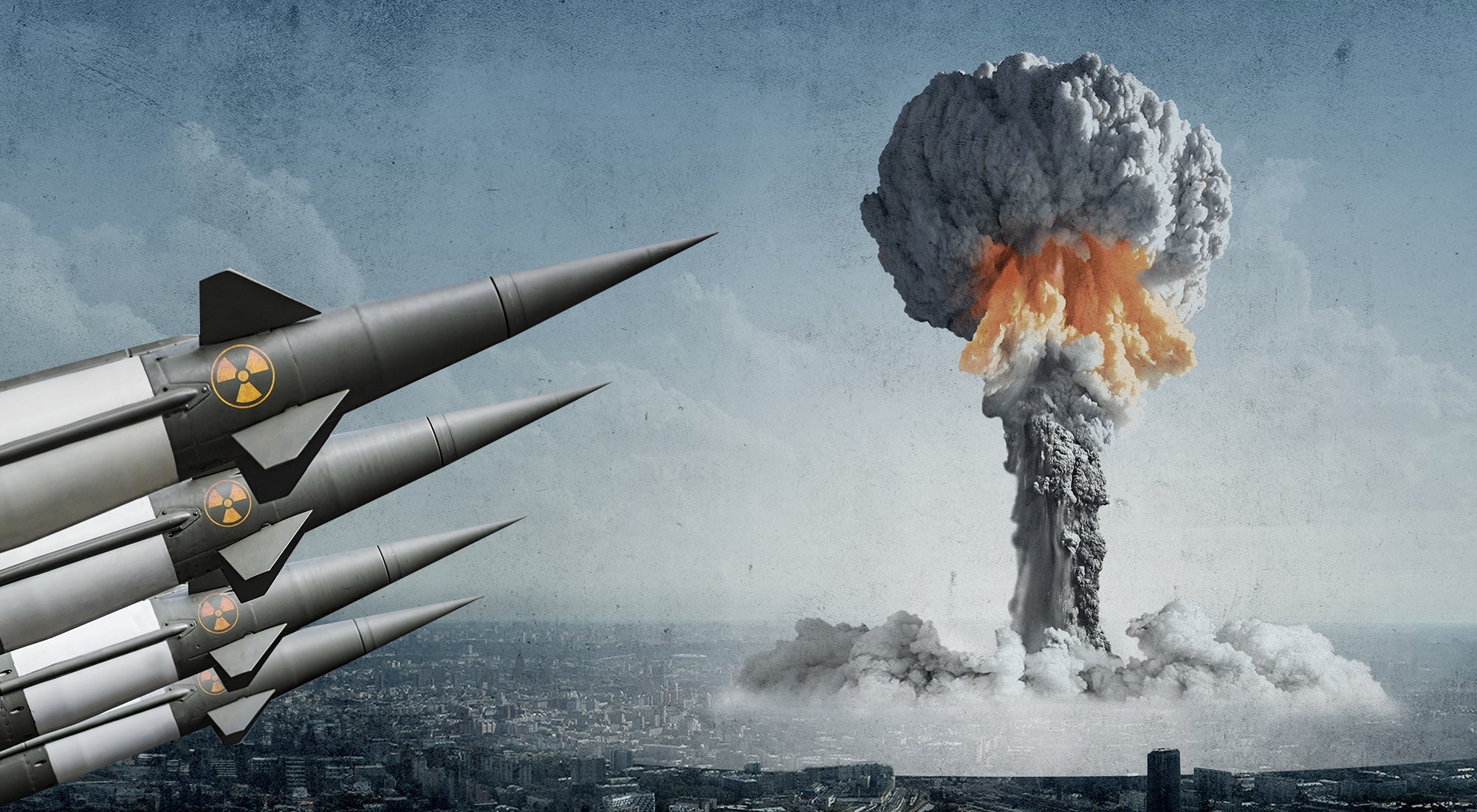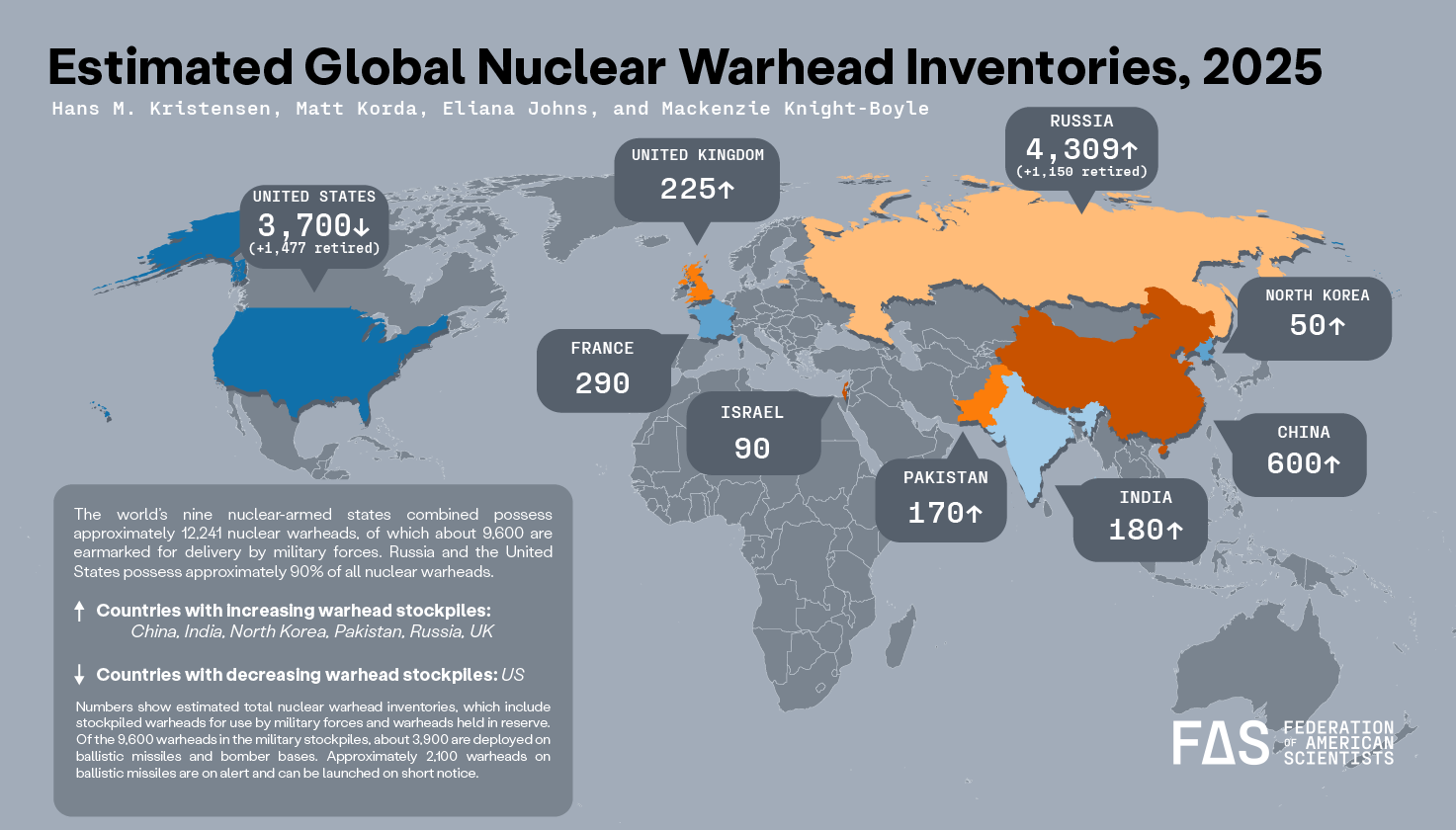
From Cold War to Hot Zones: Why Nuclear Risk Is Rising Again in 2025
Introduction: A Shift From Deterrence to Danger
Once defined by the doctrine of Mutually Assured Destruction (MAD), the Cold War era maintained nuclear peace through the logic that no one could “win” a nuclear war. Today, in 2025, that equilibrium is unraveling. A new age of nuclear brinkmanship is emerging—between superpowers, emerging rivals, and volatile region states. Welcome to the third nuclear age: technological escalation meets geopolitical fracture.

1. The End of the Disarmament Era
In June 2025, the Stockholm International Peace Research Institute (SIPRI) warned that the long post–Cold War decline in nuclear stockpiles has ceased. In fact, the nuclear modernization race is accelerating.
-
Global inventories reached 12,241 warheads by early 2025, with approximately 2,100 kept on high operational alert—mainly held by Russia and the U.S. and possibly now China too politicalsciencesolution.com.
-
Russia and the U.S. together hold over 90% of all warheads, yet all nine nuclear-armed nations—including China, India, Pakistan, North Korea, and Israel—are expanding their arsenals The Debrief.
The New START treaty, set to expire in February 2026, is the last agreement limiting U.S.–Russia strategic weapons. With no successor in place, world leaders are slipping into a renewed arms race armyrecognition.com.
2. From MAD to NUTS: Changing Doctrines
The principle that “nuclear war cannot be won and must never be fought” has been overshadowed by doctrines favoring limited nuclear use.
-
A shift toward Nuclear Utilization Target Selection (NUTS) encourages planning for tactical, low-yield nuclear exchanges armyrecognition.com.
-
Countries including India, Pakistan, China, and Russia are now investing in smaller warheads, MIRVs, and dual-use delivery systems—reducing the taboo against nuclear use The Debrief.
While proponents argue these tools heighten deterrence credibility, critics warn any nuclear exchange risks catastrophic escalation.
3. Tensions Across Multiple Fronts
Russia–West Flashpoints
-
Russia has unequivocally abandoned its moratorium on nuclear-capable intermediate-range missiles, openly threatening to deploy new Oreshnik missiles in Belarus—capable of Mach 10 speeds and nuclear payloads apnews.com.
-
Former Russian leader Dmitry Medvedev, now a vocal hardliner, escalates tension with aggressive nuclear rhetoric toward the West ft.com.
Asia—China, India, Pakistan
-
China expanded its arsenal from ~500 to 600 warheads, continues building hundreds of new ICBM silos, and may be keeping warheads mounted during peacetime—a direct shift from its prior posture New Eastern Outlook.
-
During Operation Sindoor in May 2025, India launched BrahMos missiles near Pakistan’s nuclear sites—raising fears of escalation if missiles are ever loaded with nuclear warheads Defence.Capital
The Middle East: Iran–Israel Crisis
-
In June 2025, Iran sharply increased its enriched uranium stockpile—potentially enough for several weapons—and declared non-compliance with IAEA safeguards for the first time in 20 years en.wikipedia.org.
-
Israel launched strikes on Iran’s nuclear facilities. The possibility of preemptive strikes and counterattacks dramatizes the danger of sudden escalation en.wikipedia.org.
4. Emerging Technologies Make It Worse
The current nuclear environment is more unstable than the Cold War due to technological integration:
-
AI‑enabled command networks, cyber attacks, hypersonic missiles, and nuclear anti‑satellite weapons shorten warning times and increase miscalculation risk The Asia Live.
-
Russia is reportedly developing nuclear-armed satellites, which could drastically degrade communication networks and escalate crises into space reddit.com.
5. Why It Matters—Back to You
You may not live in Moscow, Beijing, or New Delhi—but in a globalized world, nuclear conflict can reach anyone:
-
Dead zones near missile trajectories, fallout drifting across borders, or global shocks to supply chains.
-
Escalations could knock out power, communications, and access to essentials for extended periods.
-
Civilian survival depends not only on policy but on personal and community preparedness.
6. Themes to Reflect On
-
Deterrence Is Weakened by Proliferation: More actors with more warheads create more collision points.
-
Technology = Risk Accelerator: AI and cyber capabilities undermine command control and blur battlefield lines.
-
Flashpoints Are Global: Europe, South Asia, Middle East—multiple regions risk crossing nuclear thresholds.
-
Public Memory Matters: Lack of historical awareness may dull moral resistance to nuclear escalation.
-
Preparedness ≠ Panic: Building resilience is responsible—not fearful.
🔮 What Happens Next?
As the Cold War fades into memory, hot zones of instability take its place. The coming years could unfold along several paths:
✅ Best Case – Diplomacy Stabilizes the Game
-
Post-2026 arms control negotiations succeed in renewing limits or capping arsenals.
-
Regional flashpoints cool, reducing nuclear risk.
-
You have time to build resilience through stockpiles, home preparation, and community planning.
⚖ Mid Case – Persistent Regional Instability
-
Low-level conflicts simmer, involving nuclear-armed neighbors.
-
Intermittent disruptions to energy, food supply, and critical infrastructure.
-
Inflation spikes, and security concerns grow in everyday life.
⚠ Worst Case – Nuclear Escalation Opens Pandora’s Box
-
Tactical warheads are used in a crisis (e.g. South Asia or Middle East).
-
Electrical grids fail; fallout zones spread; communication collapses.
-
You and your community face weeks of scarcity and isolation.
🛠 What You Can Do to Prepare (Now)
Preparation can be practical—and life-saving—in times of crisis. Here’s what to do today:
-
Buy a 72‑Hour Survival Kit
-
Includes water purification, ration meals, emergency radio, flashlight, batteries, and first aid.
-
-
Secure Clean Water Solutions
-
Portable filters, purification tablets, gravity-fed systems.
-
-
Backup Power Preparedness
-
Solar chargers, small generators, headlamps, essential electronics.
-
-
Develop a Family Communication & Escape Plan
-
Establish meeting points, offline messaging methods, and responsibilities.
-
💡 Survival planning isn’t about expecting the worst—it’s about owning your peace of mind.
Conclusion: From Cold War Mindset to Modern Survival
The nuclear order that once guaranteed stability is no more. In 2025, nuclear risk is no longer theoretical—it’s real, widespread, and influenced by both geopolitical rivalries and rapidly evolving technology.
Yet history teaches persistence, and people can act. You may not control global arms races—but you can prepare: educate yourself, support disarmament advocacy, and ensure your household is ready for what comes next. Because while leaders negotiate, you can safeguard your future.
Share


